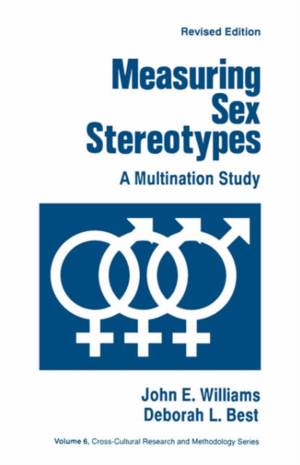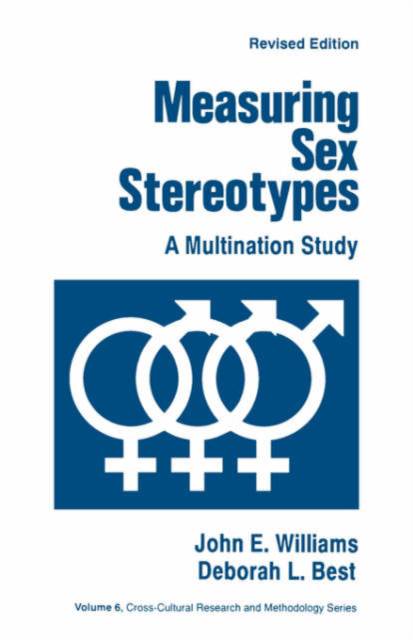
- Afhalen na 1 uur in een winkel met voorraad
- Gratis thuislevering in België vanaf € 30
- Ruim aanbod met 7 miljoen producten
- Afhalen na 1 uur in een winkel met voorraad
- Gratis thuislevering in België vanaf € 30
- Ruim aanbod met 7 miljoen producten
Zoeken
€ 238,45
+ 476 punten
Uitvoering
Omschrijving
John E. Williams and Deborah L. Best have done the field a considerable service by systematically collecting and carefully analyzing a very large set of cross-cultural data concerning sex-trait stereotypes. --Jacob O. Sines, review in Archives of Sexual Behavior Measuring Sex Stereotypes provides a unique exploration of contemporary sex stereotypes--and the degree to which they prevail in different cultures. The authors surpass all previous studies in three important areas: their data covers 30 nations; they test both children and adults; and they examine their findings from three theoretical perspectives, namely effective meanings, ego states, and psychological needs. After uncovering and describing a surprising array of pancultural sex stereotypes, the authors analyze their practical implications. New to this edition are summaries of additional studies--all conducted since the publication of the first edition--which employ the authors′ sex stereotype assessment methods. In addition, new adult sex stereotype data for Singapore and Portugal have been added, along with comparison variable data for these two countries. The culture-specific definitions of masculinity and femininity originally reported in the first edition of this book have now been used as the basis for its companion volume, Sex and Psyche. Both the new companion volume and the revised edition of this book are so closely related that readers with a serious interest in one will also wish to read the second. Professionals and students in gender studies, psychology, cross-cultural studies, family studies, and sociology will find these impressive volumes indispensable.
Specificaties
Betrokkenen
- Auteur(s):
- Uitgeverij:
Inhoud
- Aantal bladzijden:
- 384
- Taal:
- Engels
- Reeks:
- Reeksnummer:
- nr. 6
Eigenschappen
- Productcode (EAN):
- 9780803938144
- Verschijningsdatum:
- 1/04/1990
- Uitvoering:
- Paperback
- Formaat:
- Trade paperback (VS)
- Afmetingen:
- 140 mm x 216 mm
- Gewicht:
- 485 g

Alleen bij Standaard Boekhandel
+ 476 punten op je klantenkaart van Standaard Boekhandel
Beoordelingen
We publiceren alleen reviews die voldoen aan de voorwaarden voor reviews. Bekijk onze voorwaarden voor reviews.








